A Beginner's Guide to Pottery Making

Who hasn’t been captivated watching the intricate process of pottery making? It’s one of the most striking art forms around, beloved for both beauty and function. The pottery making process reaches back to the earliest days of human creativity, which taps into something primitive and pure in us all.
And though creating clay vessels has evolved through the centuries, the basic pottery making process is the same as what our ancestors followed: shaping clay into something lovely and useful.
Plus, did you know that having a creative hobby like pottery making can be beneficial to your mental and physical health? In a study published in 2010 by the American Journal of Public Health, researchers studied the idea that engaging in an artistic way can affect mood, behavior and general well-being.
Their conclusion: “Through creativity and imagination, we find our identity and our reservoir of healing.” If you’ve ever wondered how to make pottery yourself, the article below will give you some ideas for getting started.
By learning pottery for beginners, you might find that pottery making is the right creative hobby to spark your creativity and elevate your mood!
Jump to Section
How to Make Pottery
Learn Hands-on in a Pottery Class
Unless you have pottery making tools in your home, you’ll need to find a studio for pottery making in your area to get the process rolling! It helps to have a qualified instructor to assist you with your pottery making, especially when you’re getting started.
An experienced potter will teach you useful tips and give you an in-depth understanding of topics like ceramics vs. pottery, the best types of clay for pottery, the best methods for glazing pottery and more.
You can sign up for pottery classes in San Francisco, pottery classes in San Diego or pottery classes in NYC where you’ll have talented artisans at the ready to teach you, in studios that provide all the necessary elements for pottery making as part of your course. If you’re not in those cities, browse pottery classes near you!
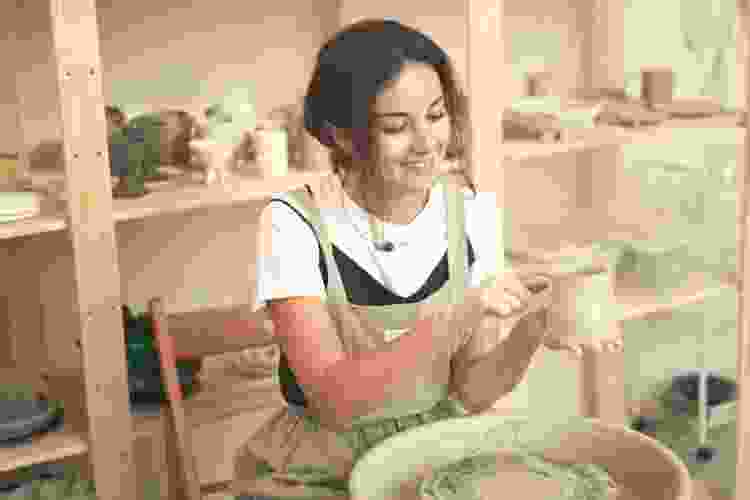
Selecting Clay
Of the various types of clay for pottery, earthenware and stoneware are the easiest clays when it comes to pottery for beginners. Earthenware is great for creating decorative pottery pieces such as pendants, jewelry pieces, plant pots, countertop and desktop bowls for holding small items.
Its surface remains porous if fired without glaze, giving it a rougher, more rustic texture. Stoneware is a better choice when crafting heavy-use pieces such as dishes, mugs and other usable food items. It can be glazed for water and food safety and resists chipping and staining when finished properly.
Choosing Glazes
Glazing pottery involves covering your pottery in crushed glass and minerals suspended in water that solidify and bond with the clay when heated. You can choose from a variety of different glazes to use for pottery making, depending on the purpose of your piece.
There are a variety of artistic and functional glazes available in a dazzling selection of colors and finishes. If you’re making dishware, make sure you choose a glaze made for that purpose.
Because the glaze and the clay will need to reach the right temperature to harden both at the same time, you should make sure both have matching cone ratings, which determine the level of heat required.
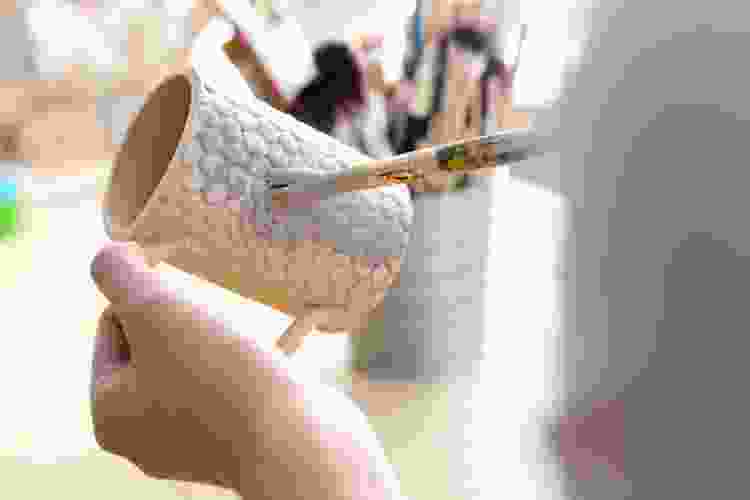
Using a Kiln
Firing is the final step in pottery making. This is where your piece is heated to a high enough temperature to solidify (or cure) both the clay and the glaze. The oven used to fire pottery is called a kiln.
The clay and the glaze you choose will determine the temperature and time spent in the kiln. Because of the safety factors involved in pottery making, it’s best to work with a professional potter and kiln house to make sure your pottery is fired properly and safely. Learn to build your own DIY potter's kiln right at home!
The Pottery Making Process
Decorative Pottery or Functional Pottery
It’s important to decide before beginning if you’ll be making a decorative pottery piece that can stand on a table, desk or shelf or a usable pottery piece that can hold food and/or water.
Sometimes, a functional piece can also be decorative, like a vase or a fruit bowl. Make sure you opt for food-safe materials in these instances. Once you know what you’ll be making, you can choose the right type of clay and glaze to use. You can also decorate your pieces by painting ceramics with fun and unique ceramics projects and pottery painting ideas.
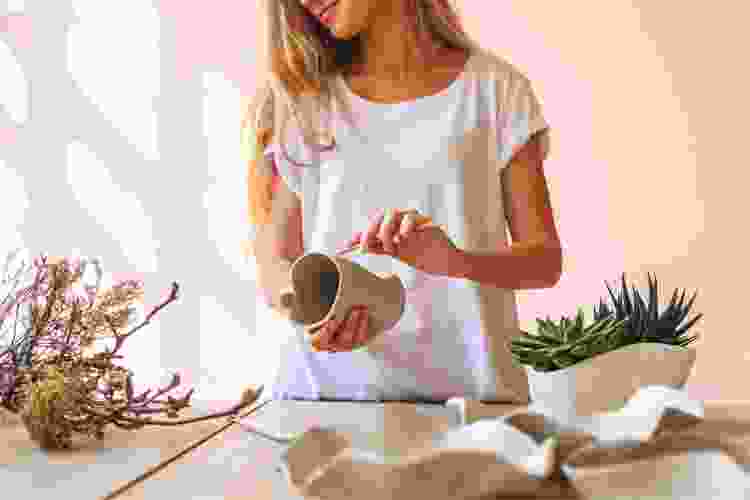
Shaping Your Piece
There are several ways to turn raw clay into a piece of pottery. Pinch pots are the easiest pottery making project for beginners. They’re made exactly how they sound: clay pinched into the shape of a bowl, pot or dish.
As a simple hand building pottery idea, they’re usually no larger than the palm of your hand and they’re excellent for getting a feel for pottery making. You can also build pots, cups, plates and other vessels by coiling thin strips of rolled clay on top of one another.
And when you’re ready to be adventurous with your pottery making, you can try carving delicate patterns into the surface of your pieces by removing small sections of clay.
Using a Pottery Wheel
The most familiar element of pottery making is the pottery wheel! Older versions are operated by pushing your feet along a wheel at the bottom to spin the table at the top. Newer versions are electric and allow for various speeds.
With a pottery wheel, a vessel is built up using the coiling method, then spun on the wheel and smoothed with your hands or various tools. This allows you to thin the walls of the vessel by gently pulling the clay to expand the size and shape. It can be thrilling to watch — and even more thrilling to actually turn the wheel yourself!
You may also hear the term “wheel throwing” used with this process. There’s no actual throwing involved; it’s just another term for using a wheel in pottery making.

Smoothing
Once the shape of your piece is set, the next step in the pottery making process is smoothing. There are several ways of smoothing pottery. In the most basic process, a wet sponge is pressed gently against the outside of the vessel while it turns on the wheel.
As it spins, the sponge is dragged up gently from top to bottom. This happens repeatedly until the desired smoothness is achieved. A more advanced version of this process uses a flat wooden smoother tool to burnish the clay before firing. After smoothing, you can use a length of wire to slice the base of your piece and free it from the wheel.
Drying
When your piece is completely shaped and smoothed, you’ll need to let it dry for a while. Clay that isn’t dry enough before firing in a kiln can explode, destroying hours of hard work.
To prevent this, your piece should be air-dried for at least seven days, until it becomes “bone dry.” It will be pale and solid, and feel warm and dry to the touch rather than cool and damp. Before it goes into the kiln, you’ll want to apply glaze to create brilliant color and add shine to your piece.
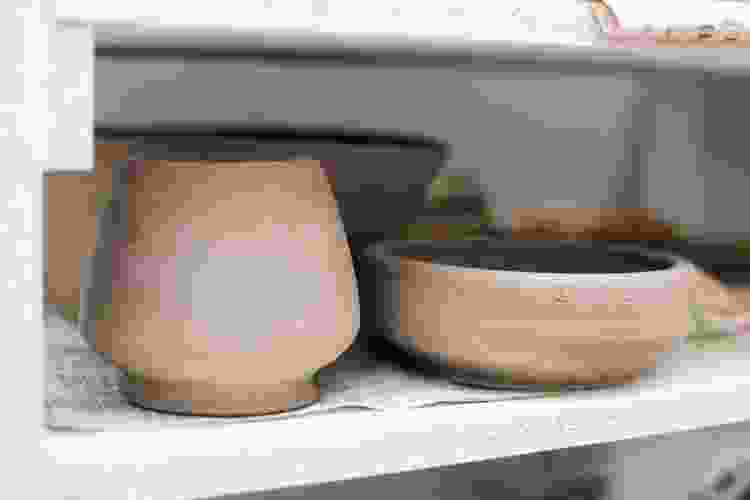
Glazing
Once your clay is bone-dry, it’s time for the glazing process! Based on the type of clay you’ve used, you can choose from a number of colorful glazes in different finishes, from velvety matte to supergloss. Low-fire glazes are economical and produce vibrant colors when fully fired, while mid-fire glazes create subtle, earthy finishes.
The glaze itself is made from finely-ground minerals in liquid that adhere to the surface of your piece. When heated to the right temperature, the minerals melt and fuse with the clay, forming a bond and bringing out the final finish.
To mix your glazes, add glaze powders to water, mixing and straining until you reach the proper consistency. Be sure to wear gloves, a mask and proper eye protection to keep from accidentally consuming the powders. After mixing, let your glaze stand for a full 24 hours before using it.
Then, you can brush it on or dip your piece into the glaze to achieve the intended design. Add water to improve the consistency if it gets too thick. Once you’ve finished adding your glaze, set your piece aside to dry fully before firing.
Firing
Your piece will go into the kiln at the temperature determined by your clay and glaze cone ratings. This means they can be fired at temperatures between 1845 and 2305 degrees Fahrenheit. That’s incredibly hot, which is why a professional kiln is always recommended!
The firing process can last from 10 to 24 hours, which means you’ll be leaving your piece to pick up at a later date. Rest assured it will be worth the wait!
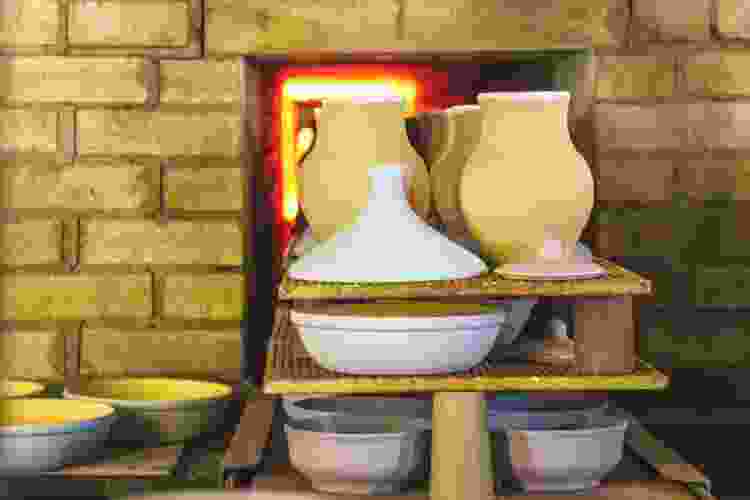
Once you know how to make pottery and try it for yourself, don’t be surprised if you get hooked! Seeing the finished piece from your adventures in pottery making is one of the most exciting creative moments you can have.
And turning raw clay into a beautiful and possibly usable piece of art will give you a sense of accomplishment you’ll want to have again and again.
For even more creative ideas and inspiration, check out other experiences happening on Classpop!

